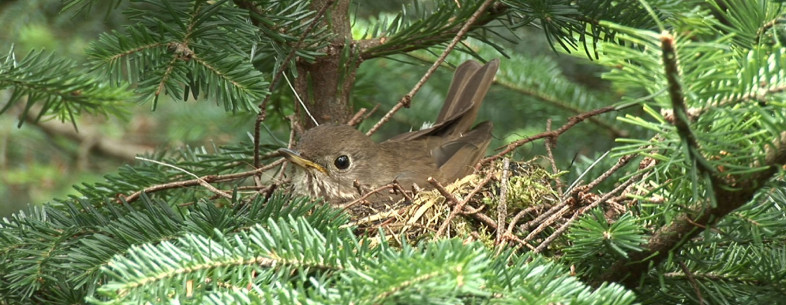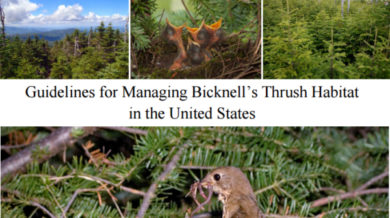A new resource for planning the management and conservation of Bicknell’s Thrush habitat by High Branch Conservation Services in cooperation with the Vermont Center for Ecostudies is now available through the International Bicknell’s Thrush Conservation Group web site.
The photo-illustrated Guidelines for Managing Bicknell’s Thrush Habitat in the United States, describes how to promote habitat conditions and processes that will help sustain Bicknell’s thrushes and other disturbance-adapted mountain birds in the US Northeast. A common understanding of the habitats and practices that benefit this vulnerable species will help secure its future as an icon of the Northeast’s most remote forests.
Similar guidelines for five other species (American marten, Canada warbler, rusty blackbird, scarlet tanager, and wood thrush) are available from High Branch Conservation Services. All together, these tools were developed with input from 85 public- and private-sector foresters, wildlife biologists, and conservation planners representing twelve states and three Canadian provinces. They were funded by the Northeast Regional Conservation Needs (RCN) Grant Program with a matching commitment from Plymouth State University and other collaborating institutions. The Northeast Association of Fish and Wildlife Agencies administers the RCN program to support implementation of State Wildlife Action Plans throughout the region.
If you are a land manager or owner, we invite you to consider applying these guidelines in forests where you work. If you anticipate using them to help plan conservation or harvest activities, please notify Dan Lambert at High Branch Conservation Services with information about the location and extent of your project. This will help us assess the level of uptake in the region. We also welcome inquiries about where the guidelines could be most effectively applied. Complementary spatial prioritizations are available upon request.


